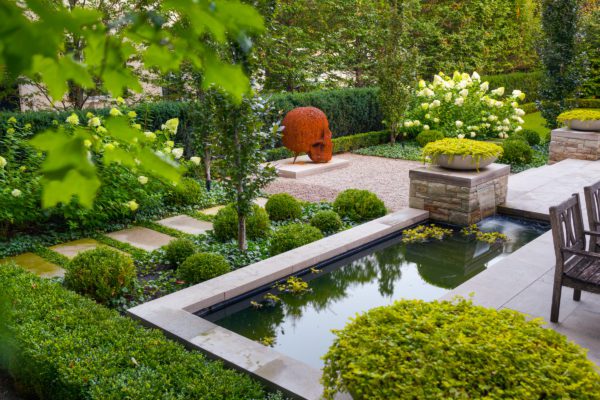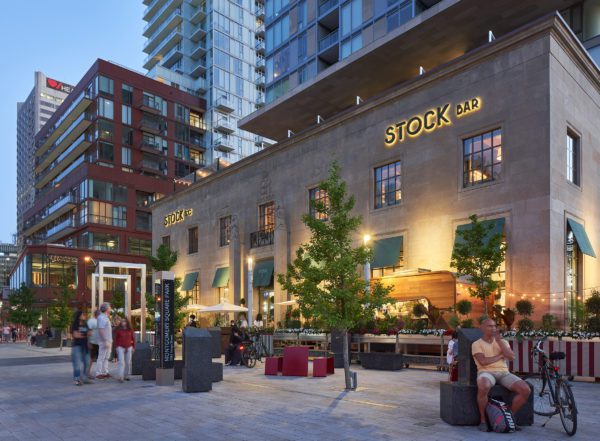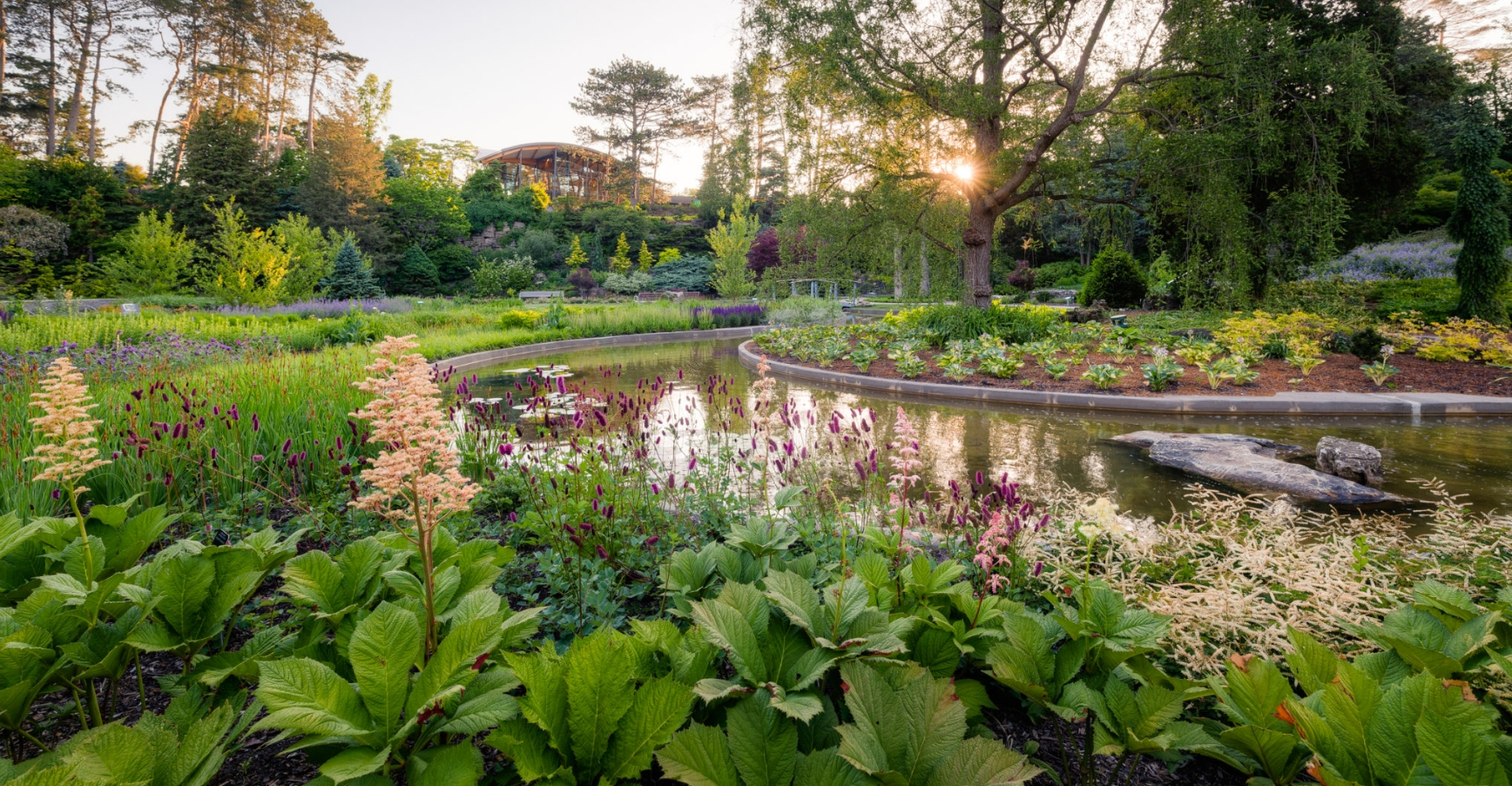
Landscape Design with Janet Rosenberg
With the harsh winter now a thing of the past, we turn our attention to longer days, warmer weather, and quality time outdoors. For those with a backyard or balcony, this may mean tending to gardens, planting herbs, or simply setting up the patio furniture. But regardless of how green your thumb may be, two years into a global pandemic, there’s little doubt your appreciation for outdoor space has fundamentally changed.
Few Canadians know more about great landscapes than Janet Rosenberg. Whether working on the grounds of an opulent estate or an intimate condo terrace, Janet Rosenberg & Studio have been creating beautiful landscapes and intelligent urban spaces across the country for nearly 40 years.
Janet’s extensive and award-winning portfolio includes transformative public spaces including: Hamilton’s Royal Botanical Gardens and the Nepean Point Redevelopment in Ottawa, luxury condominium developments such as No.7 Dale and Aquavista, as well as private estates, Canada-wide. So, as we spring into spring, we are pleased to be joined by the acclaimed landscape architect to get her take on great outdoor spaces, the pandemic effect, innovation, and environmental considerations.
What makes for great outdoor space?
A great outdoor space should be a comfortable and customizable sanctuary — a place where you can escape, relax and entertain. Gardens are organic living things — they grow and evolve over time. We like to provide the infrastructure for great garden spaces that are functional and visually beautiful through all seasons. A great outdoor space should reflect your lifestyle needs, whether its quiet contemplation in a lush garden or entertaining with family and friends. I think it is important to think about how you want to use the space and how much maintenance you want to take on. Smart design considers comfort — sun and shade opportunities; privacy; protection from wind; natural flow from inside to outside; and, how people will use the space. We love to introduce a rich layered palette of plants and trees to add texture and structure to gardens. We are using lots of native perennials and shrubs in our designs which are well suited to our growing conditions and can require less irrigation and maintenance while still achieving strong visual impact.

Janet Rosenberg + Studio
Do you have a design philosophy?
Place-making — the process of creating quality spaces that people want to live, work and play in — is one of our key design philosophies. The goal and focus of much of our work, in both the private and public realm, is to strengthen the connection between people and the places they inhabit. I believe design should be very informed and responsive to the site and context. As landscape architects, I think we have a responsibility to consider sustainability and resilience in every aspect of what we do.
The concept of ‘home’ has really changed dramatically over the last two years. How have homeowners changed their approach to their exterior space?
The pandemic has brought a new level of appreciation to outdoor spaces for socializing and generally enhancing well-being. We have seen tremendous interest from clients to make improvements to their outdoor spaces that extend their seasonal use with elements such as covered shade structures and heaters or fire elements. There is also lots of interest in pools and hot-tubs, but also outdoor kitchens, and pavilions with entertainment systems (sound and TV or movie screens) and comfortable furnishings. Our gardens and porches were how many people connected with their extended families over the past two years and I think we have put new value on these spaces.
What trends should we be on the lookout for in 2022?
Sustainability and designing with nature. There is lots of interest in ‘wilding’ our cities and gardens and shifting perceptions about what healthy and thriving gardens should look like. I believe there is a growing shift away from the perfect manicured grass lawn and beds of annuals. We are seeing more interest in using native plants and grasses that require less maintenance and water. Native plants, sourced locally, are more resilient and responsive and tend to be hardier and more adaptable to extreme weather events. I think there are ways to design with native plants in masses that provide beautiful visual impact through all our four seasons, and also provide habitat and food for birds, butterflies and insects. Given all that’s happening in the world, creating sustainable, environmentally conscious outdoor spaces should be a priority.

Montgomery Square – Toronto, ON
Toronto is becoming a city of condos. Do you have any recommendations for people living in a building?
We have had the privilege of working on a number of condo and mixed-use developments in Toronto. Many have components including large amenity terraces, green roofs, and at-grade public landscapes. Amenity terraces and private terraces can provide an incredible extension of living space, and they don’t need to be all hard surface. We like to integrate areas of extensive and intensive green roof and also lots of pots and containers of varying heights and sizes. This can add layers of green and provide opportunities for herb and vegetable gardening too. Great furnishings are key, but it is also important to consider the view from inside the condo unit and the layout of furniture inside. Awnings and shade sails can be great for comfort and extending use. With clients moving into new condos, we often take advantage of the opportunity to upgrade the paving material while the crane is still on site, and we make sure that there is water provision to the terrace.
How have environmental issues informed your approach to landscape architecture?
Climate change is an urgent crisis that landscape architects have an ethical obligation to address. We need to invest in low-carbon, low impact, climate-positive strategies, and can start by creating outdoor environments that are sustainable and carbon-neutral. For example, we look carefully at the grading of a property, to see how water can be collected and reused for irrigation or slowly infiltrated. We also look at low maintenance gardens with native and hardy plants and pollinators. We also try to do a lot of green roofs and green walls, because they help collect water and reduce the “heat island” effect. We are trying to source materials locally, and we are exploring reused and recycled materials wherever possible.
Is there one thing that you are working on right now that is really innovative?
We’re currently working on a major project at Nepean Point in Ottawa, a spectacular lookout over the Ottawa River, Parliament Buildings, and the Canadian Museum of History, just behind the National Gallery of Canada. It’s a culturally and historically significant space that was previously disconnected both from the urban fabric and the river valley landscape. A key design move was to blur the boundary with the City and river via the use of a Ha Ha — a historical landscape element used to control access without blocking views. The Ha Ha collects stormwater to prevent cliff erosion, showcases a diverse native floral display, opens up views by concealing guard rails and serves as a key interpretive element that tells the story of the river. The space is under construction and set to be complete in 2023. I think, as we talked about earlier, the pandemic has really made us appreciate our parks and gardens in a new way. We are recognizing the value of our outdoor spaces as key contributors to our overall health and wellness.
_______
For more information on Janet Rosenberg & Studio, visit www.jrstudio.ca

